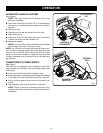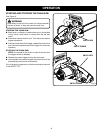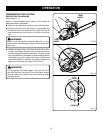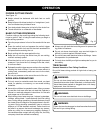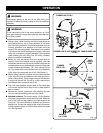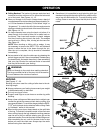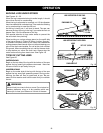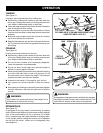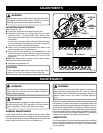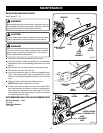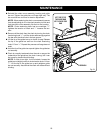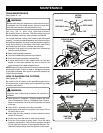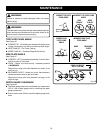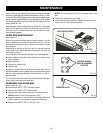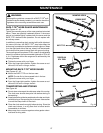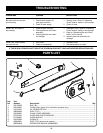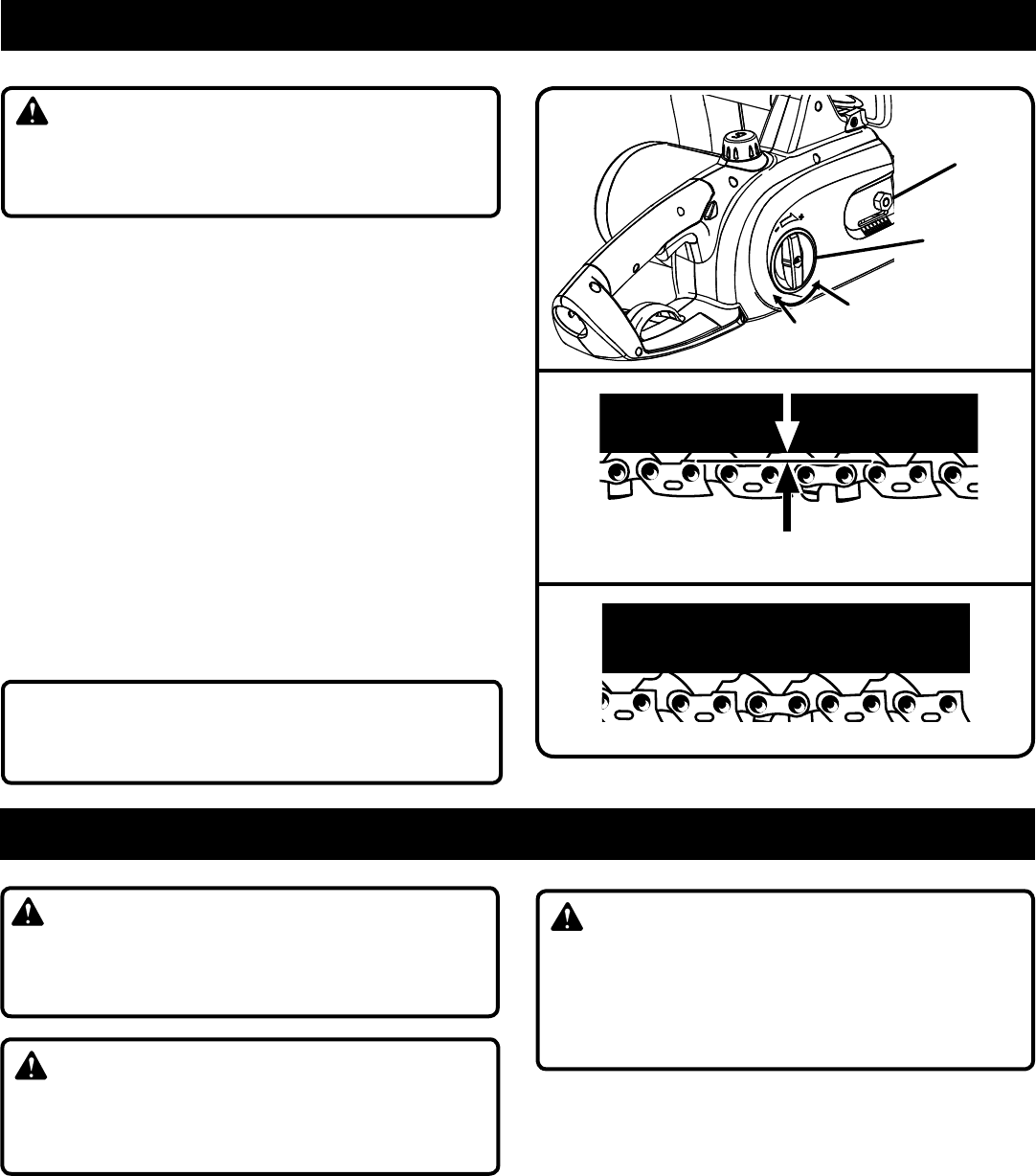
21
ADJUSTMENTS
WARNING:
Before performing any adjustment, make sure the tool is
unplugged from the power supply. Failure to heed this
warning could result in serious personal injury.
ADJUSTING CHAIN TENSION
See Figures 24 - 26.
n Unplug the chain saw and remove power cord.
n Loosen the guide bar nut to finger tight, turn the chain
tensioner knob “+” will tension the chain. Refer to “Re-
placing Bar and Chain” later in this manual for additional
information.
A cold chain is correctly tensioned when there is no slack
on the underside of the guide bar, the chain is snug, but
it can be turned by hand without binding.
n Chain must be re-tensioned whenever the flats on the
drive links hang out of the bar groove.
n During normal saw operation, the temperature of the
chain will increase. The drive links of a correctly tensioned
warm chain will hang approximately .050 in. out of the
bar groove.
NOTE: New chain tends to stretch, check chain tension
frequently and tension as required.
n Retighten the guide bar nut.
MAINTENANCE
Electric tools used on fiberglass material, wallboard, spackling
compounds, or plaster are subject to accelerated wear and
possible premature failure because the fiberglass chips and
grindings are highly abrasive to bearings, brushes, commu-
tators, etc. Consequently, we do not recommended using this
tool for extended work on these types of materials. However,
if you do work with any of these materials, it is extremely
important to clean the tool using compressed air.
LUBRICATION
All of the bearings in this tool are lubricated with a sufficient
amount of high grade lubricant for the life of the unit under
normal operating conditions. Therefore, no further lubrica-
tion is required.
WARNING:
When servicing, use only identical Ryobi replacement
parts. Use of any other parts may create a hazard or
cause product damage.
WARNING:
Always wear safety goggles or safety glasses with side
shields during power tool operation or when blowing
dust. If operation is dusty, also wear a dust mask.
GENERAL MAINTENANCE
Avoid using solvents when cleaning plastic parts. Most
plastics are susceptible to damage from various types of
commercial solvents and may be damaged by their use. Use
clean cloths to remove dirt, dust, oil, grease, etc.
WARNING:
Do not at any time let brake fluids, gasoline, petroleum-
based products, penetrating oils, etc., come in contact
with plastic parts. Chemicals can damage, weaken or
destroy plastic which may result in serious personal
injury.
APPROX. .050 (1.25 mm)
Fig. 25
Fig. 26
FLATS
Fig. 24
CAUTION:
Chain tensioned while warm, may be too tight upon
cooling. Check the “cold tension” before next use.
CHAIN
TENSIONING
KNOB
TO
LOOSEN (-)
TO
TIGHTEN (+)
GUIDE BAR
NUT



